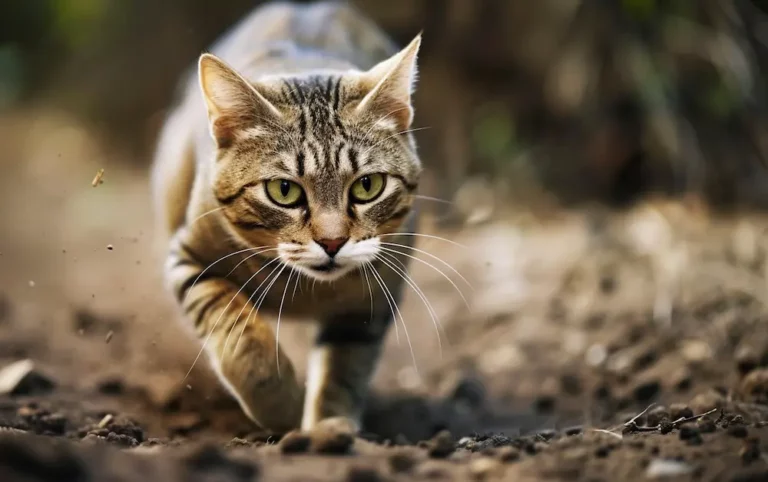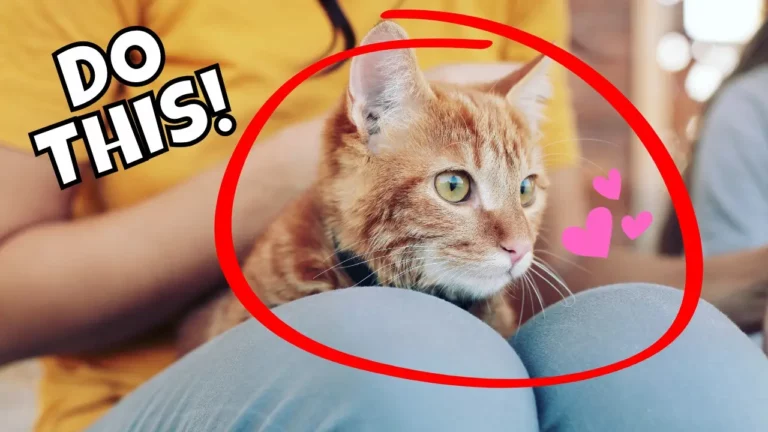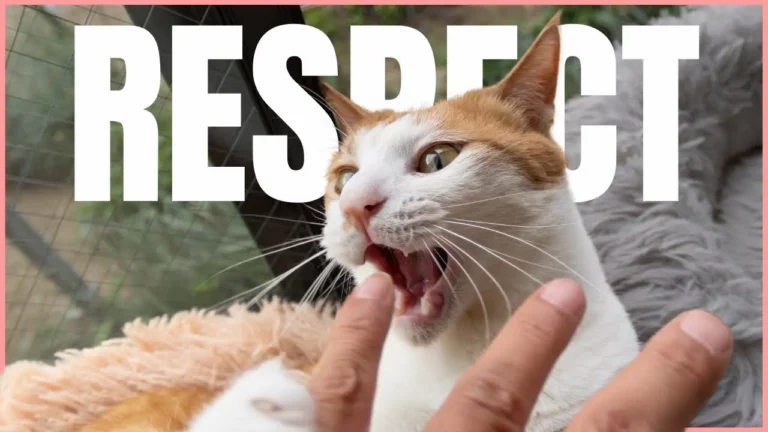These 10 Everyday Things SERIOUSLY Stress Out Cats
I recently learned that our everyday actions can cause significant stress for cats, and it’s more important than we might think. Imagine how a simple loud noise or an unfamiliar visitor could turn their day upside down.
Our
As pet owners, understanding these stressors is essential to ensuring their well-being.
Have you ever considered how strong scents or lack of adequate playtime might affect your
There’s a lot more to explore when it comes to keeping our cats stress-free.
Loud Noises
Loud noises can easily startle and stress out our
Thunderstorms, fireworks, and even the vacuum cleaner’s roar seem to be particularly distressing for her.
I’ve learned that cats have incredibly sensitive hearing, which amplifies these noises and makes them much more alarming than we might realize.
When I vacuum, I try to give her a heads up by turning it on in another room first, so she’s not caught off guard.
Sometimes, I’ll even set up a cozy, quiet space for her to retreat to when I know there will be loud sounds, like during a holiday fireworks show. It’s a small effort, but it makes a big difference in her comfort.
Creating a calm environment is key.
Soft music or white noise can help mask sudden loud sounds that might otherwise frighten her.
I’ve found that being mindful of noise levels and providing a safe space can greatly reduce her stress.
It’s all about showing a little extra care to keep our kitty friends feeling secure and loved.
Unfamiliar Visitors
When guests come over, my
She darts under the bed or into a closet, seeking refuge from the sudden change in her environment.
Cats are creatures of habit, and new faces disrupt their sense of security. The different voices, scents, and movements can be overwhelming, leading to anxiety and fear.
I’ve learned a few strategies to help ease her stress during these times.
First, I create a safe space for her, a quiet room with her favorite toys and bedding where she can retreat if she feels threatened.
It’s important to let her come out on her own terms, rather than forcing interactions.
Sometimes, I’ll even use a calming spray or diffuser to help reduce her anxiety.
I also inform my guests to approach her quietly and allow her to sniff their hands before attempting to pet her.
This helps her feel more comfortable and less threatened.
Over time, some regular visitors have become familiar enough that she’ll cautiously come out to observe, though she still prefers to keep a safe distance.
Patience and understanding are key in helping her feel secure.
Dirty Litter Box
A dirty litter box is one of the most common sources of stress for my
Cats are notoriously clean creatures, and they rely on a tidy, odor-free space to do their business.
When the litter box isn’t maintained, it can cause significant anxiety and discomfort for them.
I noticed that when my
Cleaning the litter box daily is essential.
It’s not just about scooping out the waste; it’s also about making sure that the box itself is clean and free from lingering smells.
I’ve found that using a high-quality, clumping litter helps keep everything more manageable and less odorous.
Additionally, replacing the litter entirely every week or so can make a big difference.
I also make sure to place the litter box in a quiet, low-traffic area of the house.
This ensures that my
Sudden Movements
Sudden movements can startle my
I notice it most when I’m in a hurry, and I accidentally knock something off the counter or make an abrupt gesture.
The unexpected motion seems to trigger her flight response instantly.
Cats, being natural hunters, have a heightened sense of awareness about their surroundings, and sudden changes can feel like threats to their safety.
When I move quickly or unexpectedly, my
Her ears flatten against her head, her eyes widen, and her tail may puff up as she darts to a safe spot.
It’s clear she’s stressed, and it takes a while for her to calm down. I’ve learned that slow, deliberate movements help keep her at ease.
Approaching her gradually, especially when she’s napping or focused on something else, helps prevent those startling moments.
I also try to create a calm environment by minimizing abrupt actions whenever possible.
Reducing the frequency of sudden movements not only helps my
New Pets
Introducing a new pet into the home can be another significant source of stress for my
Cats are territorial creatures, and the sudden appearance of another animal can make them feel threatened and anxious.
When I brought a new pet home, I noticed my
To ease this change, I made sure to introduce the new pet gradually.
I kept them in separate rooms initially, allowing them to get used to each other’s scents through a closed door.
This helped my
Gradually, I allowed brief, supervised interactions, always making sure to provide plenty of positive reinforcement and treats for my
It’s important to maintain my
I made sure to give her extra attention and affection, ensuring she didn’t feel neglected.
Patience is key; it took several weeks for my
By taking these steps, I helped reduce my
Changes in Routine
Changes in routine can be incredibly stressful for my
Cats thrive on consistency, and even small changes can make them feel uneasy.
For example, if I suddenly change my work schedule, my
Another example is altering feeding times. Cats have internal clocks that are finely tuned to their daily routines.
If I feed her breakfast an hour later than usual, she becomes restless and starts meowing insistently. It’s her way of expressing confusion and discomfort with the disruption.
Even changes in household activities, like rearranging furniture or having different people around, can make her nervous.
She relies on familiar surroundings and consistent interactions to feel safe.
When these elements change, she may start hiding or displaying signs of stress, like over-grooming or reduced appetite.
To minimize stress, I try to keep her daily schedule as consistent as possible.
I feed her at the same times, maintain a predictable routine, and introduce any changes gradually. This helps her feel secure and reduces anxiety.
Strong Scents
Strong scents can be overwhelming for my
Her sensitive nose picks up on strong odors, which can lead to visible anxiety.
I noticed this especially when I used to burn scented candles or bring home strong-smelling cleaning products.
She’d often retreat to a quiet corner, her nose twitching and her eyes wide, clearly uncomfortable.
It’s not just artificial scents that bother her.
Even natural but strong aromas, like those from certain foods or essential oils, can be too much.
For instance, whenever I cook with garlic or onions, she tends to avoid the kitchen entirely.
Perfumes and colognes are another trigger; a quick spritz can send her scurrying away.
Understanding this, I’ve made an effort to minimize strong scents in our home, opting for unscented or lightly scented products.
Reducing these overwhelming smells has noticeably improved her comfort and overall well-being.
It’s incredible how something as simple as scent can so deeply affect her.
Inadequate Playtime
Just as strong scents can unsettle my
Cats are natural hunters, and they need an outlet for their boundless energy and instinctive behaviors.
When I don’t give her enough playtime, I notice she becomes anxious and restless, often resorting to scratching furniture or knocking things over.
These behaviors aren’t just signs of boredom; they’re clear indicators she’s stressed.
I’ve found that setting aside specific times each day to engage in interactive play makes a huge difference.
Simple toys like feather wands or laser pointers can turn our living room into a mini adventure park, giving her the chance to chase, pounce, and release pent-up energy.
Regular play sessions not only keep her physically active but also mentally stimulated, which is essential for her overall well-being.
Moreover, creating a consistent routine helps her feel secure and reduces anxiety.
I’ve learned that even just 15 minutes of dedicated playtime can significantly improve her mood. By being attentive to her needs, I can guarantee she stays happy and healthy, thereby strengthening the bond we share.
Confined Spaces
When my
She starts pacing, her eyes wide and ears pinned back. It’s clear she’s uncomfortable, and I can’t help but feel for her.
Cats are naturally curious creatures, and while they do enjoy exploring nooks and crannies, being trapped in a tight spot is a different story.
They need to feel in control of their environment, and confined spaces can make them feel helpless and trapped.
I remember one time she got stuck behind the washing machine. Her usual calm demeanor vanished, replaced by frantic meows and clawing.
It took a lot of patience and gentle coaxing to get her out, and even afterward, she was jittery for hours.
This experience taught me that I need to be mindful of her surroundings, ensuring she doesn’t accidentally get confined.
To help your
If you notice them getting stuck or showing signs of distress, act quickly to free them.
By being attentive and proactive, you can help maintain a stress-free environment for your furry companion.
Lack of Hiding Spots
Not having enough hiding spots can be a significant source of stress for cats.
Cats are naturally inclined to seek out cozy, secluded places where they can feel safe and secure.
When they don’t have access to these spots, their anxiety levels can rise, impacting their overall well-being.
Imagine a
I’ve found that providing simple options like cardboard boxes,
Cats rely on these hiding spots to escape from perceived threats, loud noises, or even just to take a break from the hustle and bustle of everyday life.
Conclusion
Ensuring our cats’ well-being means understanding their stressors. Did you know that 60% of cats show anxiety symptoms when their routines change?
By minimizing loud noises, keeping litter boxes clean, offering ample playtime, and providing hiding spots, we can create a vital environment.
It’s important to recognize these everyday stressors and make adjustments. Let’s prioritize their happiness and health, ensuring our






